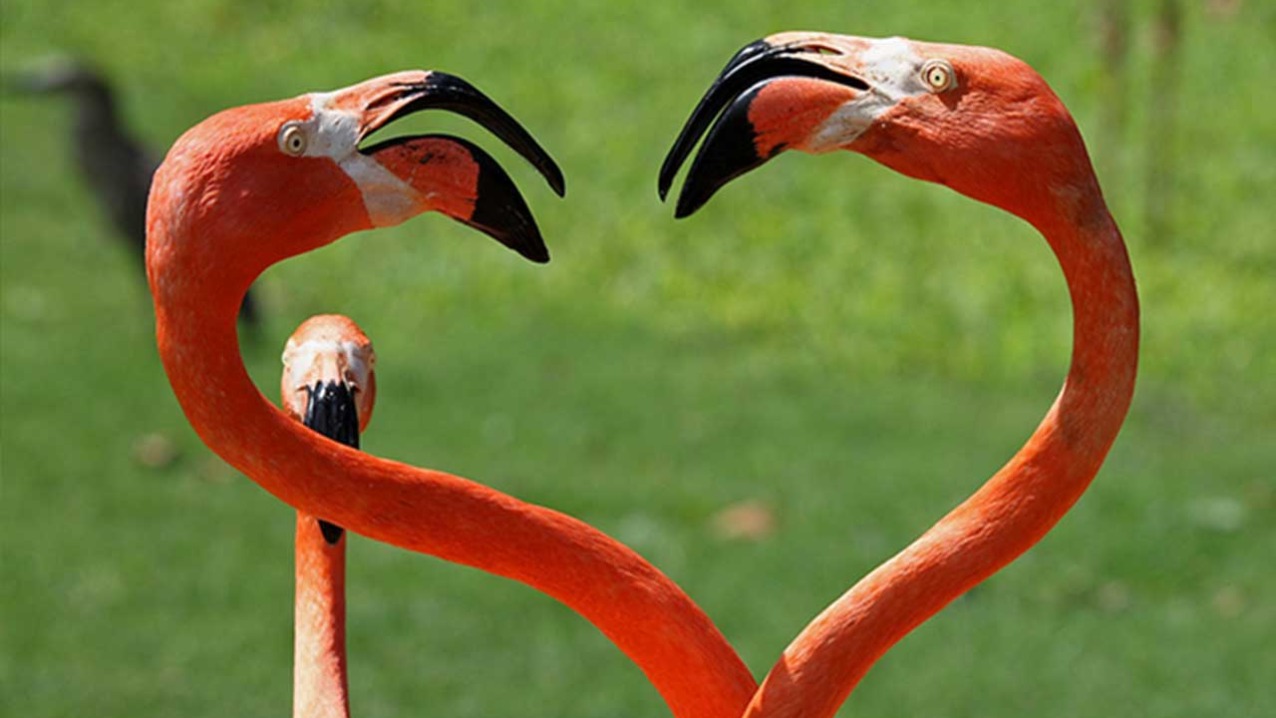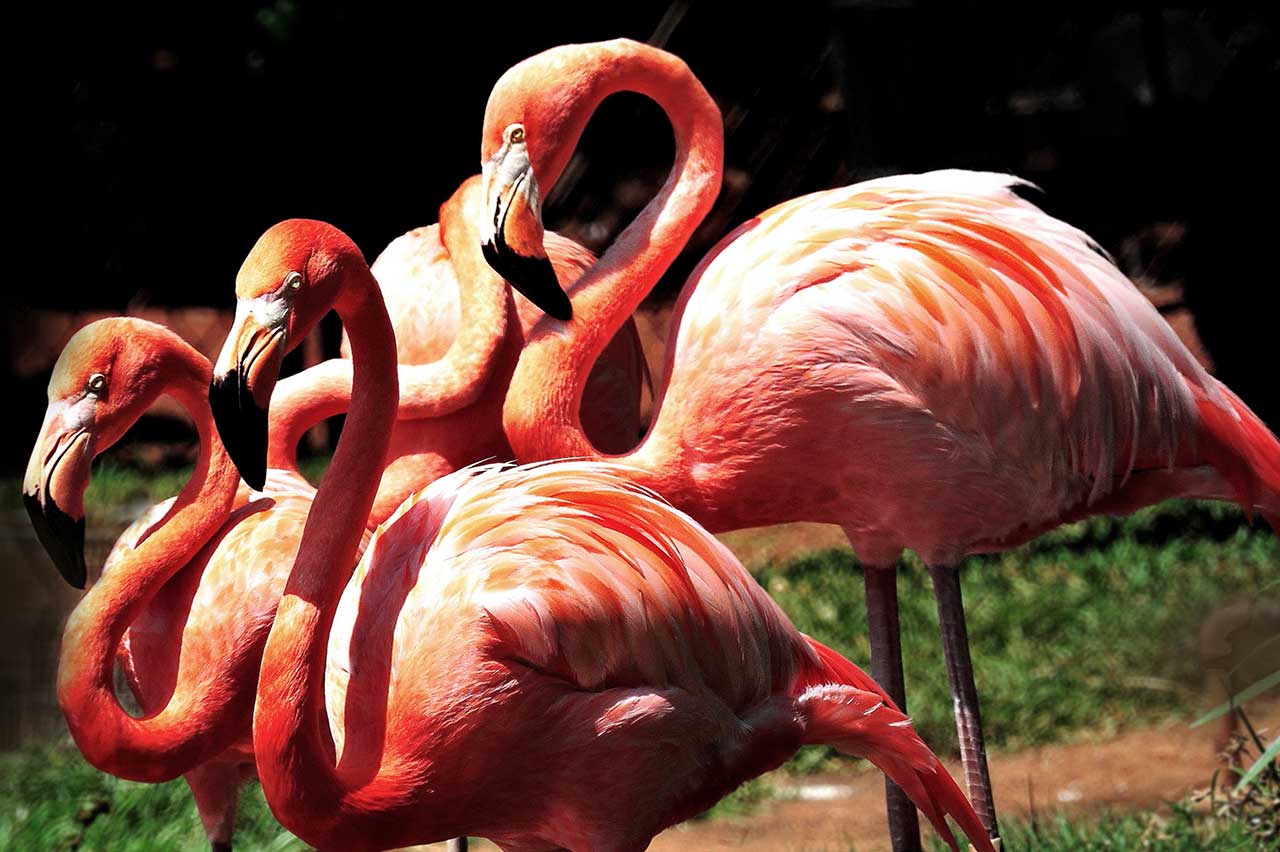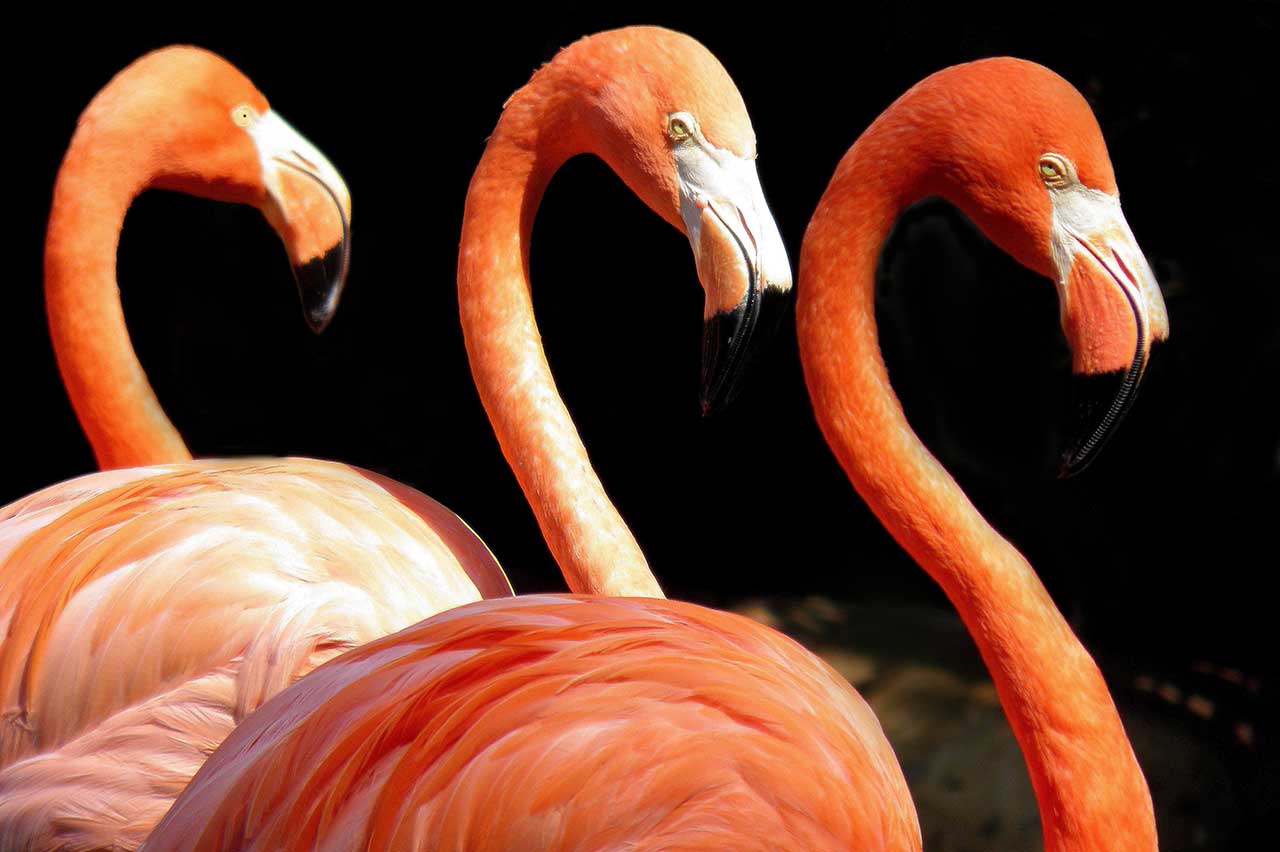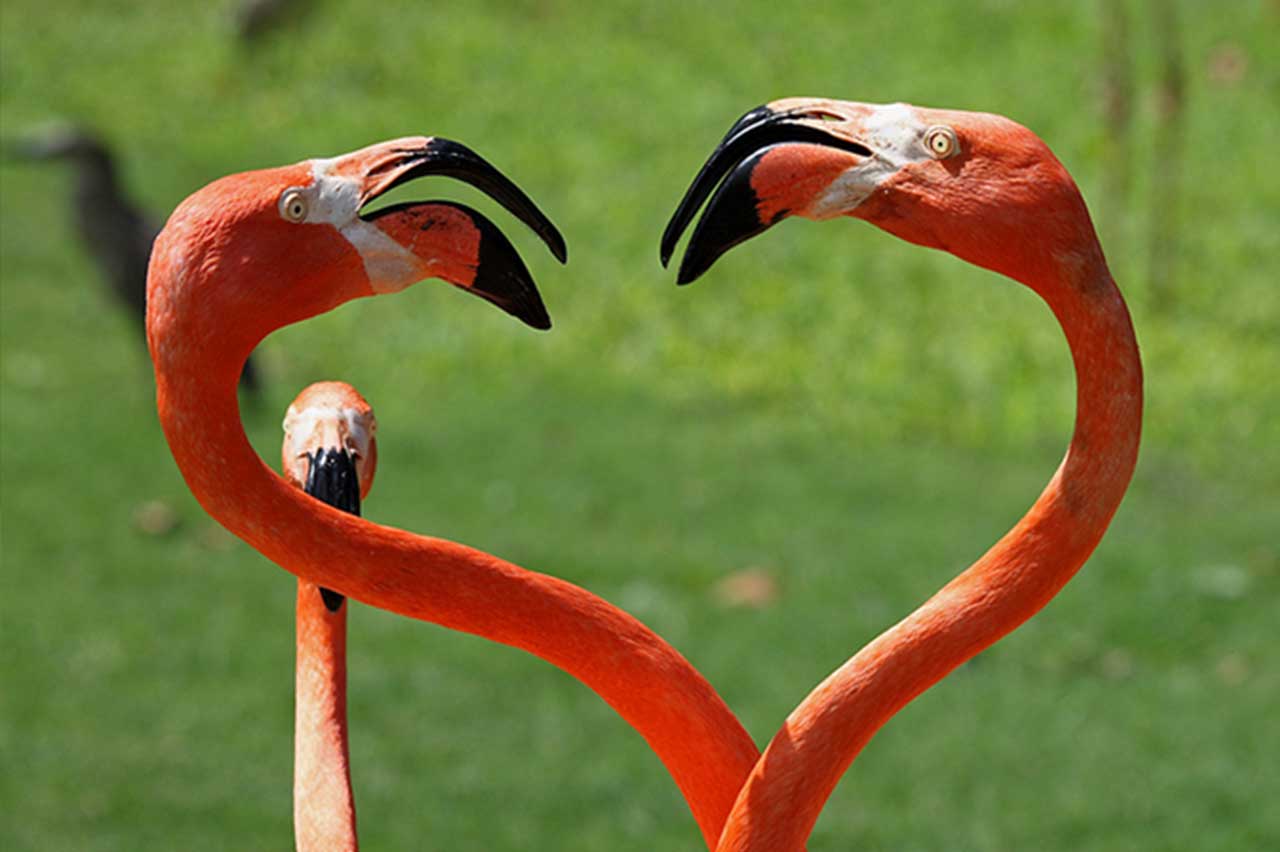phoenicopterus ruber
American Flamingo
About Me
Scientific Name: Phoenicopterus ruber
Description
At the Honolulu Zoo we have two species of Flamingo: the American (or Caribbean) from the Gulf of Mexico and the Caribbean and the Lesser Flamingo from East Africa, the Middle East and India. The American Flamingo is certainly the most colorful and well known of the flamingos and is the flamboyance that greets the visitors entering the Honolulu Zoo.
Fun Facts
- In the wild flamingos live 20 – 30 years and sometimes over 50 years in captivity.
- Flamingo legs can be longer than their entire body. The backward bending “knee” is actually its ankle, the knee is out of sight further up the leg.
- Kingdom: Animalia
- Phylum: Chordata
- Class: Aves
- Order: Phoenicopteriformes
Flamingos generally are long-legged, long necked water birds. The long neck is curved with 19 cervical vertebrae. The beak is curved and is used for filter feeding. The feet are webbed for swimming and for greater stability on soft mud.
There are five species of flamingos: The Greater (which includes the subspecies American or Caribbean), Chilean, Lesser, Andean and James’ flamingo.
Our exhibit at the Honolulu Zoo includes (from largest to smallest) the American, Chilean, and Lesser.
Flamingos live near or in brackish or salt water lakes and lagoons, where few other species compete for food. They are the only birds with a beak capable of filtering out the floating organisms on which they feed. That same filter keeps them from consuming too much salt, which could be toxic.
The American flamingo is found along the Atlantic seaboard and on Caribbean islands; the Chilean species inhabits Western South America.
The flamingo is gregarious in nature, living in flocks numbering in the thousands. Colonies are not always permanent, but seem to be affected by the change in water levels and the subsequent effect on breeding areas. Mass movements of flamingos may be the result of a communication system like that of the honey bee, with individuals reporting information about conditions at distant points. These birds fly well, occasionally soaring, and they also swim, feeding as they travel to other areas.
Flamingoes are very social birds and will not nest unless there are a number of other flamingoes present. Usually there is a “critical mass” of birds that is needed to initiate breeding and smaller flocks tend not to breed us well as larger ones. During the breeding season, group behavior is very important to get the entire flock “in the mood” for breeding and synchronize the production of eggs.
The flock displays are very dramatic, especially when performed by a large group of birds simultaneously. In the wild where flocks of Flamingoes can number in the hundreds of thousands, the infectious courtship behaviors can be seen to sweep through the flock like the crowd doing “the wave” at a football game. In smaller flocks like our own at the Honolulu Zoo, usually one or to birds start calling and displaying and soon the whole flock joins in, performing in unison.
Although Flamingoes are extremely social, they spend quite a bit of time fighting with each other. These are usually only noisy squabbles and pecking skirmishes and never cause any damage or harm. When nesting, you can see that each nest is placed exactly one neck length away from its neighbor, just within arguing distance! The most disastrous consequence of all this fighting is broken or “scrambled eggs!”
Flamingos feed on small crustaceans, algae and unicellular organisms, which they filter from the water with their unique sieve-like beak. Some are bottom-feeders; others are top-feeders, making it possible for different species to co-exist in the same territory.
The food that flamingos eat is rich in carotinoid pigments (named after the pigment found in carrots) which they use to create the pink coloration in their feathers. Without this pigment, their feathers would slowly bleach out and lose color, so in the Zoo they are fed a diet which has carophyll red pigment in it. Their diet consists of rice and scratch, shrimp meal, bread, ground meat, salt, flamin oil, dog meal and smelt.
It is difficult to distinguish the sexes apart. Males tend to be larger than females. Sexual maturity is reached after 5-6 years. These birds congregate in huge flocks in the wild. As they mature some of the birds engage in ritual preening and stretching movements, always in the same sequence. The flocking instinct is so strong that in the Zoo, our birds remain together in their exhibit by species.
The newly hatched chick has white down feathers, a straight pink beak and thick legs. After 2-3 weeks new gray down feathers grow and the beak begins to bend. At this stage the young are not able to filter feed. They are fed by their parents on a liquid produced in the gullet which is rich in carotinoid pigment. The young Flamingo achieves fully adult plumage in 3-4 years and can breed at 6 years.
Corresponding to the long growth period and the late onset of breeding, flamingos have a long life span. Records exist of 30 years for some captive birds.
The Honolulu Zoo flock numbers 19 birds. Most of our birds are quite old and could be considered geriatric. All but 5 of the birds were adults in 1968 when they arrived here at the Honolulu Zoo. That makes most of the flock over 30 years old. That is not exceptional for a flamingo, but since these were adult birds when they arrived, they could have been 10 to 20 years old or older. Four of the five other birds were born at Sea World of California in 1989.
The youngest bird in the flock is Sherman. He is the only Flamingo to be born here at the Honolulu Zoo. Sherman’s egg was laid in 1993 and his parents tried to take good care of it. Unfortunately, one of the Flamingoes infamous squabbles ended with Sherman’s egg being knocked from its nest and rolled into the pool. When the keepers found the egg the next morning it was cold and wet and it was thought that there would be Little chance it would hatch. The determined keepers moved the egg to an incubator and hoped for the best. Miraculously, the egg hatched and the chick was named Sherman.
Raising Sherman was a struggle. Young Flamingoes have a very specific diet and the food must be dribbled into their throats like the adult Flamingoes do. Sherman also had several medical problems, but with round the clock keeper care, and medical help from our zoo veterinarians, he pulled through. As he got a bit older, he was taken out to the Flamingo pond every day to mingle with the other birds. Sherman though, prefers to think he is a human. To this day he follows the keepers around and will often lay his head on their shoulder. If you notice a Flamingo marching up and down calling to the visitors with a band on his leg with the number #3 on it, that is Sherman.
Other Birds
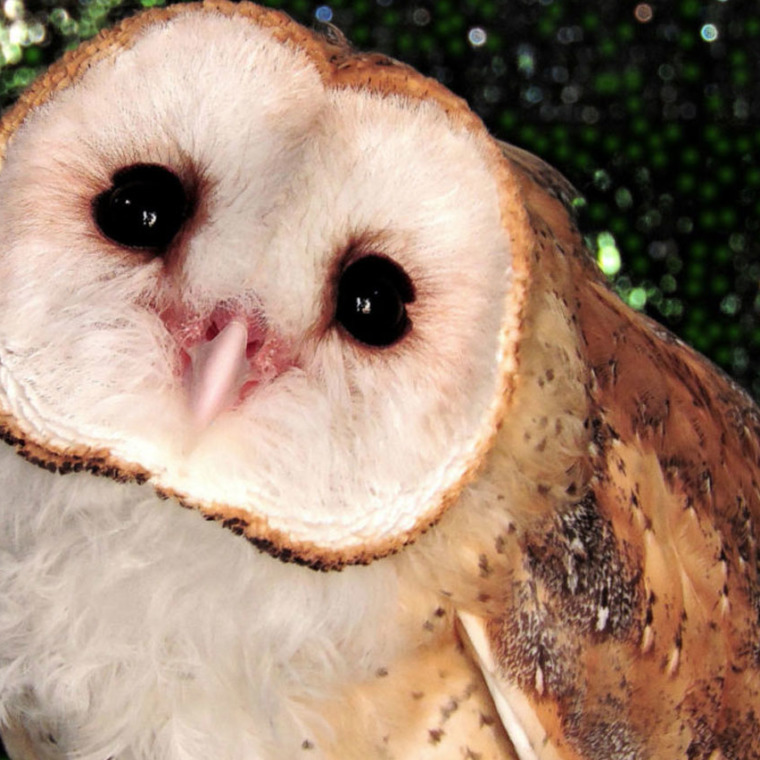
Barn Owls are found throughout the globe, in Europe, Africa, Asia, Austrailia, and the Americas
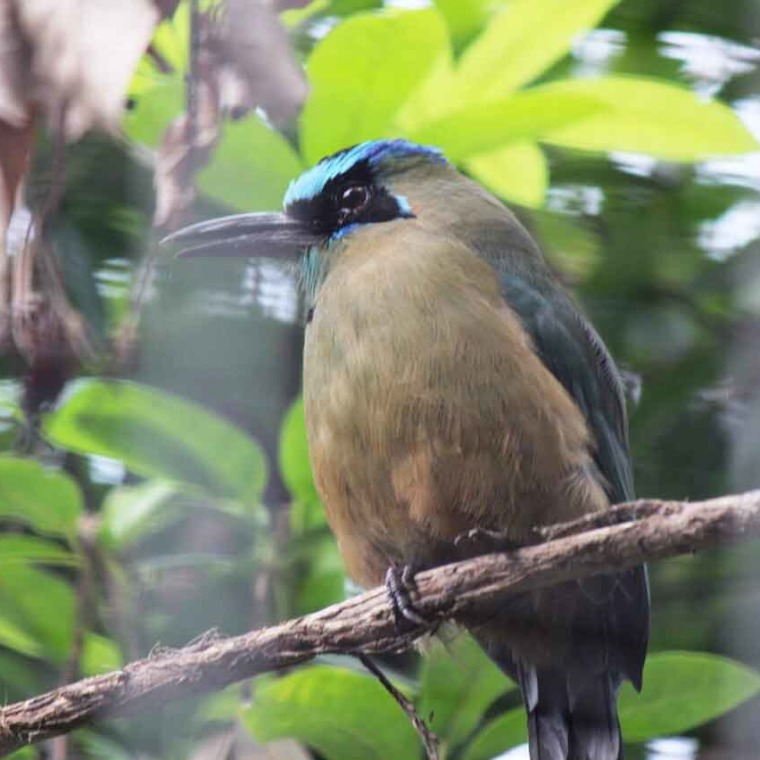
This animal can grow over a foot in length! Motmots possess a serrated beak and red eyes, with a black mask that encircles their heads.
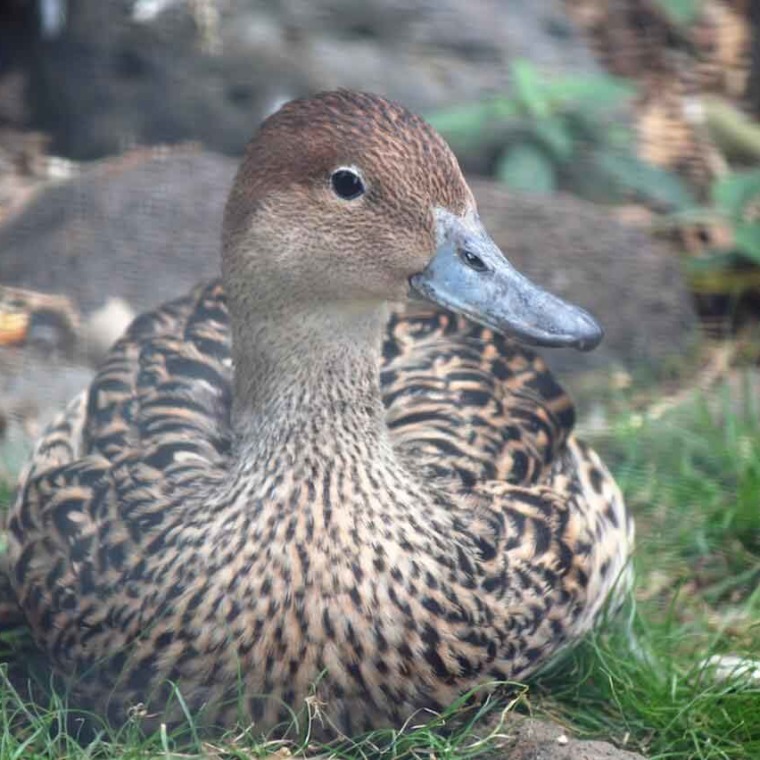
Koloa maoli are very secretive and difficult to observe except in protected areas such as Hanalei National Wildlife Refuge on Kauai.
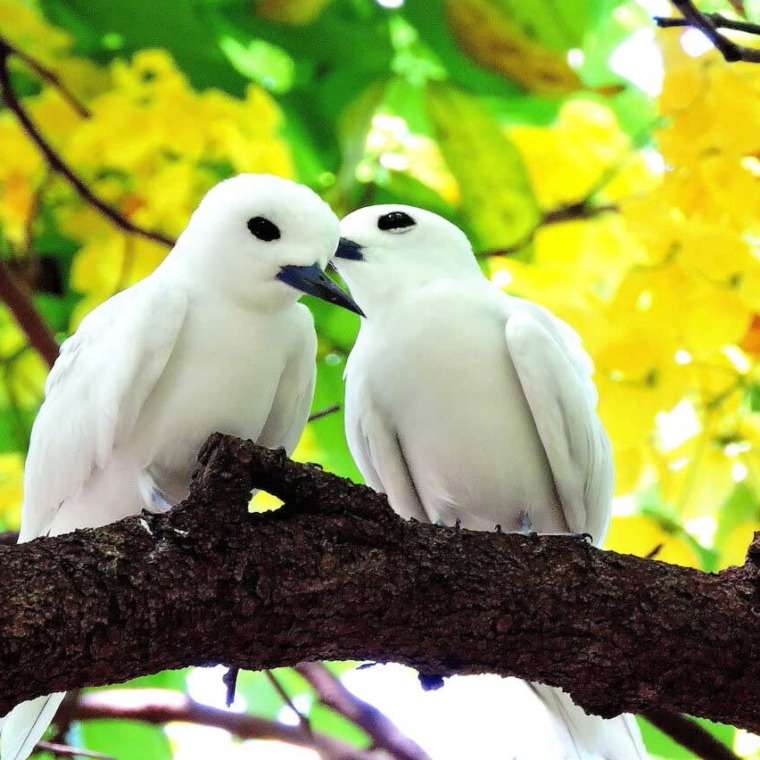
This bird is found primarily on islands, and has a wide ranger across the equatorial band of every ocean on Earth, save for the Arctic Ocean, which does not cross the equator.
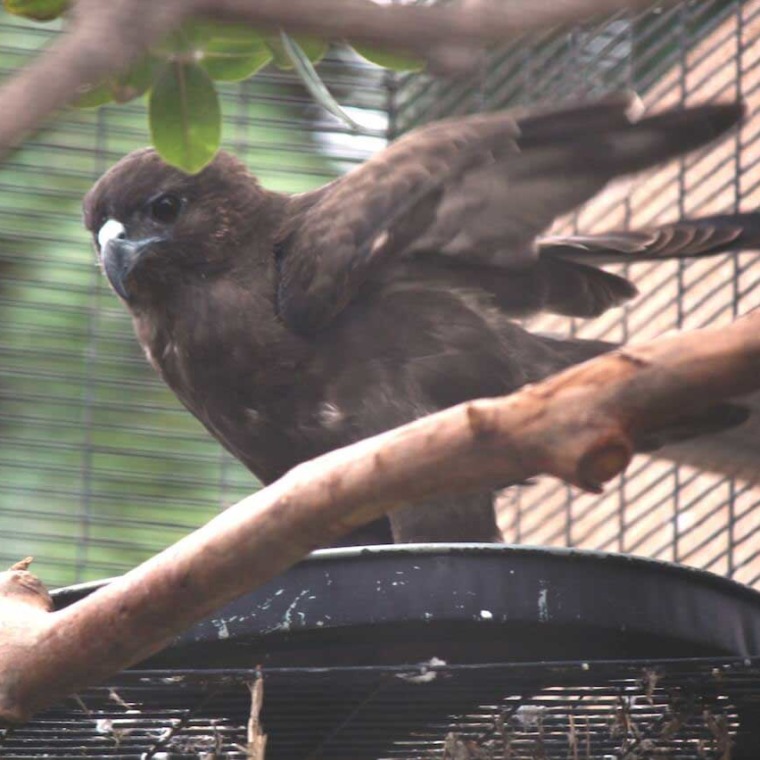
’Io prefer to hunt from tall perches that they use to survey their prey; however, they are known to dive at targets from mid-flight if the opportunity presents itself. are territorial and come together only to breed.


